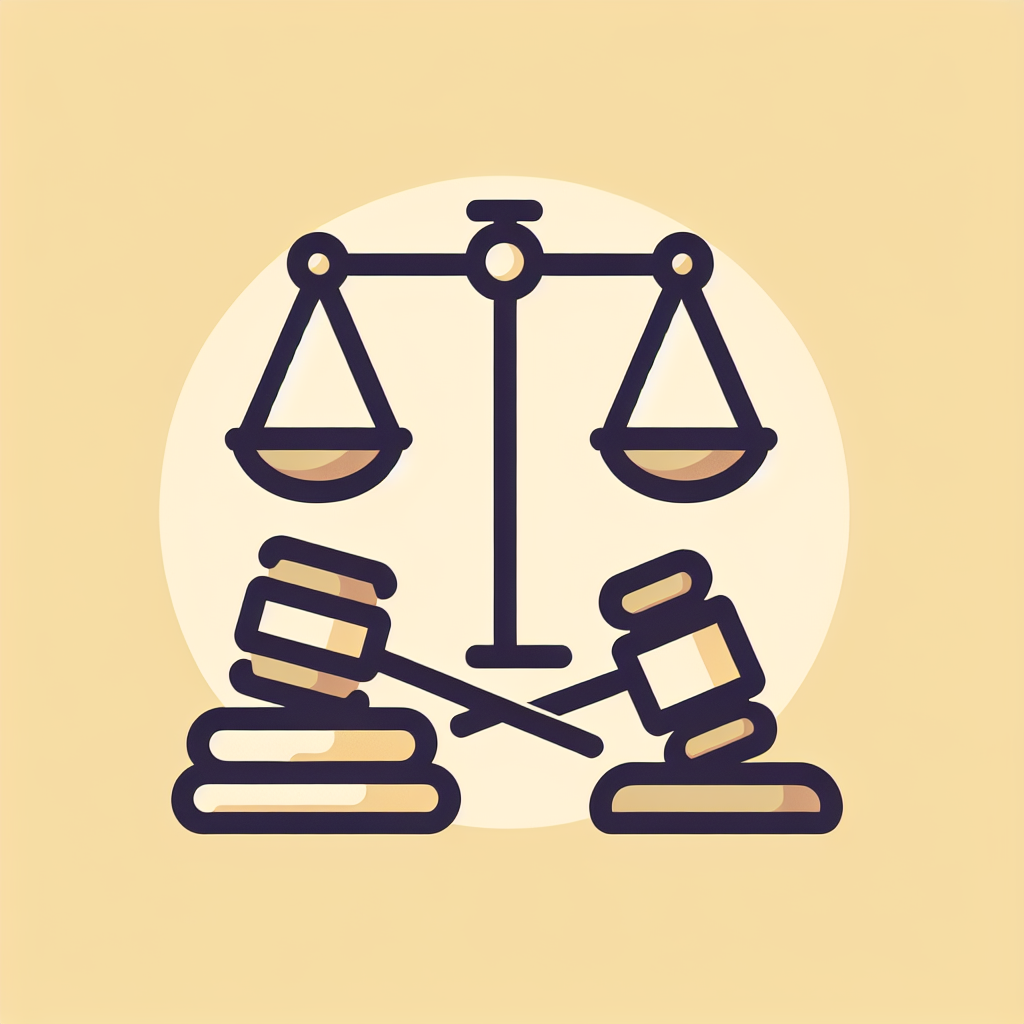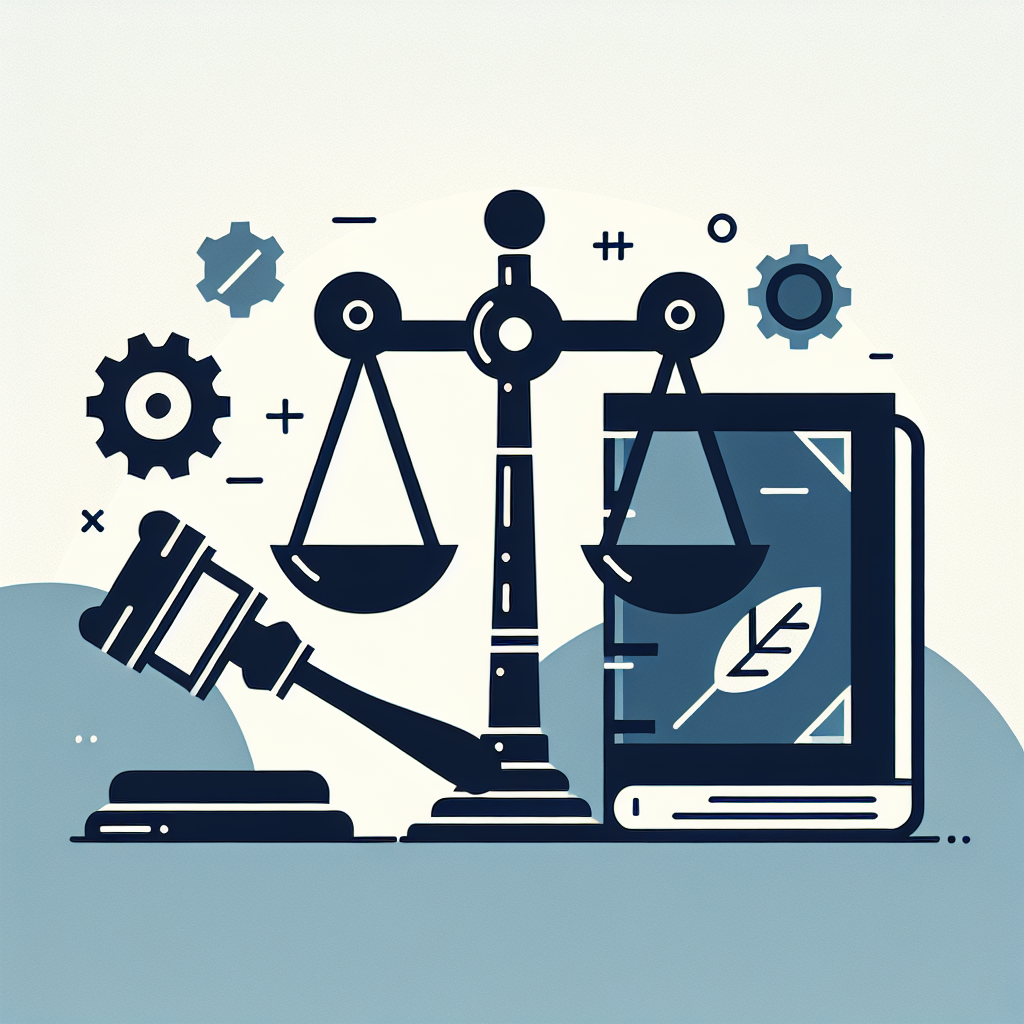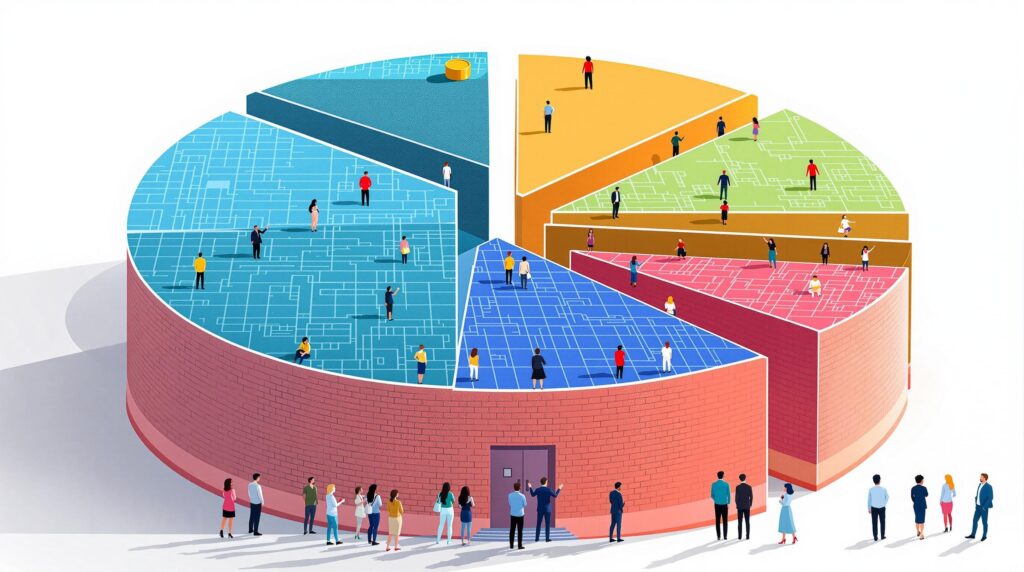[rev_slider alias=”slider-1″][/rev_slider]
The Importance of Layer 1 Blockchains for Smart Contracts
Smart contracts have revolutionized business processes, having first emerged as significant players on blockchain platforms like Ethereum. But what supports these autonomous, secure, and efficient contract systems? Enter Layer 1 blockchains, the underlying main architecture of decentralized networks, essential in smart contract facilitation and distributed apps (dApps) deployment.
Understanding Smart Contracts
At its core, a smart contract is a protocol intended for digitally facilitating, verifying, or enforcing the negotiation or performance of a contract. Smart contracts allow the performance of credible transactions without third parties. These transactions are trackable and irreversible, making them a foundational element in modern blockchain frameworks.
Think of smart contracts as self-operating computer programs that automatically execute, control, or document legally relevant events and actions according to the terms of a contract or an agreement. The benefits of smart contracts are most noticeable in their efficiency and security: they cut out the intermediaries, reduce transaction costs, and provide a very high level of data security.
One of the earliest successful adaptations of smart contracts is in creating decentralized applications (dApps). These are digital applications or programs that exist and run on a blockchain or peer-to-peer network of computers instead of a single computer, and are outside the purview and control of a single authority.
Did you know? Ethereum, the first blockchain system to popularize smart contracts, is known as a Layer 1 blockchain because it processes and finalizes transactions on its own platform without needing another network.
The Role of Layer 1 Blockchains in Supporting Smart Contracts
Layer 1 blockchains are integral to the functionality of smart contracts. By providing the structural framework that these contracts operate within, these blockchains not only enable but optimize the deployment and execution of smart contracts. Here are a few ways through which Layer 1 blockchains underpin smart contracts:
- Network Security: These blockchains provide a decentralized security model which is crucial for maintaining the ledger’s integrity against double-spending and other fraudulent activities.
- Consensus Mechanisms: Whether through Proof of Work (PoW), Proof of Stake (PoS), or other consensus models, Layer 1 blockchains validate and record transactions in a tamper-proof manner.
- Scalability Solutions: With advancements such as sharding or Layer 2 solutions (like rollups), the base-layer blockchain ensures that smart contracts executed are efficient and scalable to meet high demand.
- Interoperability Features: Some Layer 1 blockchains are developing cross-chain compatibility features, allowing smart contracts on different blockchains to interact seamlessly with each other.
For businesses and developers, understanding the distinctive attributes and capabilities of these Layer 1 blockchains is essential. This knowledge can guide decisions on where to develop or deploy new applications, depending on factors like transaction speed, fee structures, and network security.
As blockchain technology evolves, the continued development of Layer 1 solutions will play a crucial role in defining the future landscape of digital contracts and decentralized applications. Combining both robust security measures and innovative performance enhancements, these blockchains remain the backbone of decentralized technology.
Key takeaway: Robust Layer 1 blockchains crucially support the wide array of functionalities required by smart contracts, securing a decentralized, reliable, and efficient digital future.
Conclusion
As blockchain technologies proliferate, the importance of Layer 1 solutions becomes increasingly evident. These platforms form the critical infrastructure needed for running complex smart contracts and host a burgeoning ecosystem of decentralized applications. By understanding and leveraging these foundational blockchains, developers can create more dynamic, secure, and efficient solutions that drive the future of decentralized transactions.
Top Layer 1 Blockchains to Consider for dApps
An ever-evolving digital landscape demands robust and scalable blockchain platforms. Enter Layer 1 blockchains, the backbone of decentralized applications (dApps). These blockchains not only manage vast amounts of transactions but also maintain decentralization and security. In this detailed review, we explore the top Layer 1 blockchain technologies that are making waves in the realm of dApps and smart contracts.
What is a Layer 1 Blockchain?
Definition: A Layer 1 blockchain refers to the fundamental blockchain architecture. It is the base level framework where consensus and transaction validation happen directly on the blockchain itself. Layer 1 solutions involve improving the base protocol itself to enhance overall performance and scalability.
Ethereum: The Pioneer of Smart Contracts
Ethereum has long stood as the frontrunner in the dApp space, powered by its turing-complete language, Solidity. Ethereum’s smart contract capabilities enable developers to create sophisticated and diverse decentralized applications. However, with growing popularity comes scalability challenges, which Ethereum 2.0 promises to address through transitioning from Proof of Work (PoW) to Proof of Stake (PoS) and introducing shard chains.
Bitcoin: Not Just a Currency
While primarily known for cryptocurrency, Bitcoin’s underlying technology offers a secure Layer 1 blockchain platform. Through mechanisms like the Lightning Network, Bitcoin is expanding its utility beyond just financial transactions, aiming to enhance scalability and transaction speed.
Cardano: The Research-Led Blockchain
Cardano distinguishes itself through a strong emphasis on research and peer-reviewed insights. With its unique Ouroboros consensus algorithm, Cardano promises to enhance transaction speed and energy efficiency. The recent introduction of smart contracts through the Alonzo update positions Cardano as a potent competitor in the dApp marketplace.
Polkadot: Interoperability Focus
Interoperability is a core focus of Polkadot, which aims to enable different blockchains to communicate and share information without compromising scalability. Its relay chain concept facilitates the processing of multiple transactions on smaller, parallel chains while ensuring overall network security.
Solana: High Throughput and Fast Transactions
Known for its astonishingly high transaction speeds, Solana uses a unique Proof of History (PoH) consensus combined with the underlying PoS mechanism. This enables it to process thousands of transactions per second, presenting a valuable proposition for high-frequency dApps.
Binance Smart Chain: Dual Chain Architecture
Binance Smart Chain runs parallel to Binance Chain with an emphasis on enabling smart contracts. It incorporates the Ethereum Virtual Machine (EVM), allowing developers to deploy Ethereum-based applications and achieve high throughput at a lower transaction cost.
Comparative Analysis of Layer 1 Platforms
When selecting a Layer 1 blockchain for dApps, consider the following attributes:
- Scalability: How efficiently can the network handle increased demand?
- Security: What mechanisms are in place to protect against potential attacks?
- Decentralization: To what extent does the network avoid central points of control?
- Developer Ecosystem: How vibrant and supportive is the community around the blockchain?
- Consensus Mechanism: What consensus protocol does the blockchain use, and what are its implications for speed and energy consumption?
Understanding these core characteristics can help stakeholders make informed decisions about which blockchain to adopt for their specific needs.
Conclusion
The landscape of Layer 1 blockchains is diverse and continually evolving, with each platform offering unique capabilities and innovations aimed at enhancing dApp development. Whether you prioritize speed, security, or interoperability, there’s a Layer 1 solution out there that fits the bill.
If you’re looking to integrate blockchain technology into your operations or develop a new dApp and need professional insight, feel free to reach out to our expert team at Jara. With our deep understanding of the blockchain ecosystem, we’re well-equipped to guide you through the intricacies of choosing and implementing the right technology for your needs.
Note: If you require further assistance or have specific queries regarding the application of blockchain technology in your projects, contact Jara at our dedicated phone line: 000-000-0000 or via our website at www.getjara.xyz.
“Your Voice, Our Mission” – at Jara, we champion your rights with the tenacity and dedication that has earned us the trust of community members. Let us guide you through the technological landscape to secure your digital future.
[rev_slider alias=”text-call-cta”][/rev_slider]
Layer 2 Solutions: Enhancing Scalability and Efficiency
An exploration of Layer 2 blockchain solutions that complement Layer 1 chains.
The Role of Layer 2 in dApp Development
Layer 2 solutions are essentially built to enhance the scalability and efficiency of Layer 1 blockchains. By handling transactions off the main chain, they significantly reduce the burden on Layer 1, allowing for quicker processing times and lower transaction fees. This functionality is particularly crucial in the development and operation of decentralized applications (dApps), which require high throughput to function effectively.
What is Layer 2? Layer 2 is a collective term for solutions designed to help scale applications by handling transactions off the main blockchain (Layer 1). They ensure faster processing and lower fees.
Decentralized applications stand at the core of blockchain innovation, offering a multitude of services from decentralized finance (DeFi) to non-fungible tokens (NFTs). However, as dApps grow in complexity and user base, the strain on the blockchain’s capacity increases. This is where Layer 2 solutions step in, offering different mechanisms to scale these applications effectively.
Popular Layer 2 Scaling Solutions
The most prominent Layer 2 protocols include state channels, sidechains, plasma, and rollups. Each of these technologies has its strengths and applications, making them suitable for different types of dApp functionalities:
- State Channels: Facilitate real-time transaction channels between parties, significantly reducing the load on the blockchain by batching transactions to be processed at once.
- Sidechains: Operate as separate blockchains parallel to Layer 1, but with their own consensus algorithms, enhancing performance and flexibility.
- Plasma: Creates child blockchains linked to the main chain, rolling up transactions in a hierarchical tree structure to improve efficiency.
- Rollups: Bundle hundreds of transactions into a single one, submitting only the transaction data to the Layer 1, relying heavily on off-chain computation.
Each of these technologies plays a crucial role in optimizing the dApp ecosystem, enabling applications to run smoother and at lower costs without sacrificing security or decentralization.
Impact on dApp Developers
For developers, Layer 2 solutions offer a flexible and efficient environment to build and scale applications. They provide a balance between maintaining robust security—by tethering to the main blockchain—and achieving high transaction throughput necessary for complex applications. Moreover, these solutions can significantly lower the entry barriers for new users, making blockchain applications more accessible.
Layer 2 solutions not only enhance scalability but also democratize access to blockchain technology, enabling more comprehensive adoption and innovation in the space.
Incorporating Layer 2 solutions into dApp design requires a deep understanding of the nuances of various scaling technologies. It also necessitates a strategic approach to selecting the right Layer 2 solution that aligns with the specific needs of the application, whether it prioritizes speed, reduction in costs, or ease of integration.
At Jara, we are dedicated to blending our expertise in blockchain technology with robust legal insights to guide our clients through the complexities of dApp development and scaling. By understanding both the technological and regulatory landscapes, we empower our clients to innovate confidently and responsibly.
Future of Layer 2 Solutions
The future of Layer 2 solutions looks promising as the blockchain ecosystem continues to evolve. With the increasing demand for blockchains that can handle large volumes of transactions quickly and cost-effectively, the development of more refined and efficient Layer 2 protocols is inevitable.
Moreover, as interoperability between different blockchain systems becomes a growing focus in the industry, Layer 2 solutions will play a pivotal role in enabling seamless communication and transaction across multiple blockchain networks. This interoperability is key to the widespread adoption and functionality of decentralized technologies.
As we advance, the integration of Layer 2 solutions will likely become standard practice in blockchain development, pushing the frontiers of what is possible within the decentralized space while ensuring scalability, efficiency, and user accessibility.
The Future of Layer 1 and Layer 2 Blockchain Technologies
Insights into the evolving landscape of blockchain technologies and their future implications.
Emerging Trends in Blockchain Development
The blockchain sector is witnessing rapid advancements that promise to reshape various industries dramatically. In particular, Layer 1 and Layer 2 solutions are at the forefront of this innovation, offering enhanced scalability, security, and efficiency. Let’s delve into these emerging trends, providing you with comprehensive insights into what the future may hold for these technologies.
“Discovering the potentials of Layer 1 and Layer 2 blockchains, affording greater scalability and enhanced functionalities in digital applications.”
Blockchain technology, essentially a digital ledger consisting of interconnected blocks, has transcended its initial cryptocurrency applications. Today, it’s pivotal in developing decentralized applications (dApps) and smart contracts, which operate automatically under set conditions, reducing the need for intermediaries.
Advancements in Layer 1 Technologies
Layer 1 blockchains are the main fabric of blockchain technology, maintaining and evolving the base protocol itself. Innovations in this area often focus on improving the scalability and efficiency through various approaches:
- Proof of Stake (PoS): A notable evolution from the traditional Proof of Work (PoW) system, PoS has been instrumental in enhancing energy efficiency and scaling capabilities. Platforms like Ethereum have shifted towards PoS with notable success in reducing energy expenditures.
- Sharding: This technique involves dividing a blockchain into several smaller, more manageable pieces, or “shards,” each capable of processing transactions independently. This can significantly increase the throughput of a blockchain.
- Layer 1 Interoperability: New protocols are emerging that focus on enabling interoperability between various Layer 1 blockchains, allowing for a more integrated and expansive ecosystem.
Expanding Capabilities of Layer 2 Solutions
Layer 2 solutions are built on top of Layer 1 blockchains. They are designed to enhance scalability and transaction speed without compromising the security of the base layer. Key developments include:
- State Channels: These channels allow transactions to be processed off the main blockchain, only settling on the blockchain once the transaction channel is closed. This method significantly speeds up transaction times.
- Plasma: Plasma constructs child blockchains linked to the main blockchain, enabling the offloading of transactions from the main chain to streamline processes without compromising security.
- Rollups: These solutions execute transactions outside the main Ethereum chain (for instance) but post transaction data on it. Rollups profit from the security of Layer 1 while boosting processing capabilities.
Enhancements in blockchain technology pave the way for more dynamic, efficient, and secure solutions across industries.
With these continuous improvements, blockchain technology not only enhances its own capabilities but also expands its potential use cases across various sectors like finance, healthcare, supply chain, and beyond. As developers and corporations implement and improve upon these Layer 1 and Layer 2 solutions, we anticipate witnessing a significant transformation in how digital services are deployed, managed, and scaled.
The Implications of These Developments
The advancements in Layer 1 and Layer 2 blockchain technologies are not merely technical upgrades. They represent a paradigm shift in how digital trust and security are conceptualized and implemented. Financial institutions, healthcare providers, and supply chains stand to benefit immensely through enhanced traceability, reduced costs, and improved efficiency. Furthermore, as blockchain technology continues to mature, regulatory frameworks and compliance standards are evolving alongside, which are essential for widespread adoption and integration into established systems.
As we observe these technologies unfold, their broader implications for business practices, governance, and policy-making are expected to become more pronounced, guiding us toward a more decentralized and transparent digital age.
Understanding these trends is not just about keeping up with technological advancements—it’s about staying ahead in a rapidly transforming digital landscape. For businesses and developers keen on leveraging blockchain technology, keeping a close watch on these developments is essential.
Embrace the future of blockchain technology, where innovation meets practicality, pushing the boundaries of what’s possible in a digitally interconnected world.
Are you ready to dive deeper into how Layer 1 and Layer 2 blockchains can specifically impact your business or project? Jara offers expert insights and tailored advice to help you navigate this complex landscape. Don’t hesitate to reach out and explore the vast possibilities that await with the next generation of blockchain technologies.
Please contact us at Jara via our email at [email protected] or by phone at 000-000-0000 for further information and personalized consultation.
[rev_slider alias=”schedule-consultation-btn”][/rev_slider]


Related Practice Areas
Explore our range of services in related practice areas optimized for Layer 1 blockchain solutions for smart contracts and dApps.
List of Top-Rated Layer 1 and Layer 2 Blockchain Solutions Attorneys Serving Jara
Choosing the appropriate legal representation is crucial when pursuing a claim. A seasoned, committed attorney specializing in Layer 1 and Layer 2 blockchain solutions ensures you’re equipped to make informed choices at each phase of the process.
Attorney John Doe
Attorney Jane Smith
Attorney Richard Roe
Hear From Our Satisfied Clients
At the forefront of our Layer 1 and Layer 2 blockchain solutions practice is a deep-seated commitment to client satisfaction. Each case is handled with utmost care, as echoed in the appreciative feedback from those we represent.

[rev_slider alias=”slider-3″][/rev_slider]
[rev_slider alias=”slider-6″][/rev_slider]
Unlock Your Blockchain Potential with Jara
Exploring Layer 1 and Layer 2 blockchain technologies can be daunting, but you don’t have to navigate this complex terrain alone. At Jara, we specialize in providing sophisticated legal solutions tailored to the evolving needs of the blockchain industry. Whether you’re developing smart contracts or deploying dApps, our expertise is your advantage.
Don’t just take our word for it—our recognition in the industry speaks volumes:
- Listed as one of the “Top Blockchain Technology Consultants” for 2023 by Technology Innovators, highlighting our strategic expertise (View Award)
- Included among the “Best Legal Advisors for Tech Startups” from 2023 by Business Tech Edge, reflecting our commitment to supporting innovation (View Award)
- Highlighted as a leading firm in “Blockchain Legal Services” in Orlando, 2023 by Legal Elite, noting our tailored solutions (View Award)
- Rated as one of the “Top Firms for Digital Currency” by Digital Finance Experts in 2023, acknowledgment of our forward-thinking approach (View Award)
- Recognized on the “Best Lawyers List for Blockchain Technology” between 2016-2023 by National Legal Rankings, consistently evidencing our expertise and reliability (View Award)
Ready to ensure your blockchain ventures are not just innovative but legally sound? Contact Jara today at 000-000-0000 or visit our website at www.getjara.xyz. Let us help you turn your blockchain aspirations into reality with the confidence of having an expert legal team by your side.
About the Author
John Doe is a seasoned technology writer with a deep understanding of blockchain technology. With over a decade of experience in the tech industry, John has provided invaluable insights into the development and practical applications of Layer 1 blockchains, smart contracts, and decentralized applications (dApps). His work aims to demystify complex tech concepts and make them accessible to a broader audience.
















